Meet the "Ask the Experts" Editors
by Emily Caffrey, Ask the Experts Editor
Do you have a question about radiation protection or radiation safety? Did you see something related to radiation in the media and want to know if it is accurate? Curious about the radiation emitted by your cell phone? Have a medical procedure and want to know your risk? You have come to the right place! Since the inception of the Health Physics Society (HPS) Ask the Experts feature a number of years ago, over 13,000 questions have been fielded by our dedicated team of volunteer experts. Search through the answers here, or check out a specific category to see if your question has already been answered!
Still have a question? Submit it here and get an answer from an expert! Are you a member of the media with a specific question? Contact HPS Society Operations Editor Craig Little.
Bios and photos of the ATE editors follow.
Editor, "Ask the Experts"
|
_200x259.jpg) Emily A. Caffrey, PhD, CHP, is the program director and an assistant professor for the Master's in Health Physics Program at the University of Alabama at Birmingham. She has a BS in nuclear engineering and a PhD in radiation health physics and statistics from Oregon State University (OSU). Her technical expertise is in ionizing radiation dosimetry and statistics. She obtained the title of certified health physicist (CHP) from the American Board of Health Physics in 2021. Emily A. Caffrey, PhD, CHP, is the program director and an assistant professor for the Master's in Health Physics Program at the University of Alabama at Birmingham. She has a BS in nuclear engineering and a PhD in radiation health physics and statistics from Oregon State University (OSU). Her technical expertise is in ionizing radiation dosimetry and statistics. She obtained the title of certified health physicist (CHP) from the American Board of Health Physics in 2021.
Emily is a member of the National Council on Radiation Protection and Measurements and serves on the Communications Committee of the American Academy of Health Physics. She is very active in the Health Physics Society (HPS), currently serving on the HPS Program Committee, which develops and manages the technical program of the Society's meetings. She is the past chair of the HPS Public Information Committee (PIC), founder of the HPS Social Media Subcommittee of the PIC, and cofounder of the HPS Women in Radiation Protection celebratory web page.
Emily is a recipient of the HPS Elda E. Anderson Award for outstanding early career health physicists. In 2019, she was selected as one of 10 recipients of Oregon State's Council of Outstanding Early Career Engineers. This award is reserved for Oregon State Alumni who have distinguished themselves through professional practice and service to OSU, the profession, or society at large.
|
Accelerators
|
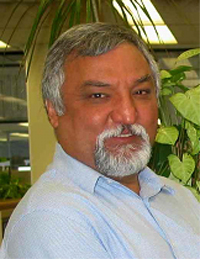 Kamran Vaziri received his PhD in nuclear physics from Utah State University in 1987, doing his doctoral thesis work at Los Alamos National Laboratory. He then worked on nuclear physics experiments at the University of Colorado Nuclear Physics Laboratory and later joined Rensselaer Polytechnic Institute, working on experiments at Brookhaven National Laboratory, Jefferson Lab, and Massachusetts Institute of Technology Bates Linear Accelerator Center. Kamran joined Fermilab's Radiation Physics group in 1992. He has been working on radiation physics problems and reviews of different accelerators and experiments. Kamran Vaziri received his PhD in nuclear physics from Utah State University in 1987, doing his doctoral thesis work at Los Alamos National Laboratory. He then worked on nuclear physics experiments at the University of Colorado Nuclear Physics Laboratory and later joined Rensselaer Polytechnic Institute, working on experiments at Brookhaven National Laboratory, Jefferson Lab, and Massachusetts Institute of Technology Bates Linear Accelerator Center. Kamran joined Fermilab's Radiation Physics group in 1992. He has been working on radiation physics problems and reviews of different accelerators and experiments.
As a radiation physicist, his responsibilities include radiation physics modeling and calculation in support of experiments and accelerator designs, site radiation measurements and instrumentation, environmental measurements, regulatory issues, and serving as Fermilab radiation safety interlocks coordinator and national emission standards for hazardous air pollutants (NESHAP) coordinator. He is the radiation safety coordinator for the NOvA experiment at Fermilab.
Kamran has coauthored more than 100 scientific and technical papers regarding radiation physics and nuclear physics. He is an occasional book and article reviewer for Health Physics. He has taught a radiation physics course at the US Particle Accelerator School and has taught radiation monitoring and environmental monitoring courses at the HPS professional development school. He is the past president of the HPS Accelerator Section.
|
Cell Phones, Radiofrequency Radiation, and Powerline Fields
|
 Kenneth R. Foster received a PhD degree in physics from Indiana University, Bloomington, in 1971. After serving with the US Navy from 1971 to 1976, he joined the University of Pennsylvania, where he is currently professor emeritus of bioengineering. His technical research has focused on health and safety as related to radiofrequency energy, with approximately 160 papers related to interactions of electromagnetic fields with biological systems ranging from biophysical mechanisms of interaction to heating of tissue by microwave energy. Kenneth R. Foster received a PhD degree in physics from Indiana University, Bloomington, in 1971. After serving with the US Navy from 1971 to 1976, he joined the University of Pennsylvania, where he is currently professor emeritus of bioengineering. His technical research has focused on health and safety as related to radiofrequency energy, with approximately 160 papers related to interactions of electromagnetic fields with biological systems ranging from biophysical mechanisms of interaction to heating of tissue by microwave energy.
In addition, he has written and spoken extensively on a broad range of topics including medical technology and health, risks of technology, and ethical issues related to biomedical technology. As well as being emeritus member of the HPS, he is coeditor in chief of BioMedical Engineering OnLine. He is a registered professional engineer, a fellow of the Institute of Electrical and Electronics Engineers, and a fellow of the American Institute of Medical and Biological Engineering.
In 2016, he received the d'Arsonval Award from the Bioelectromagnetics Society for contributions to the field of bioelectromagnetics. He has been active for many years in committees that set limits for human exposure to electromagnetic fields and other issues related to health and safety.
|
Consumer Products
|
 Charles (Charlie) Wilson is the assistant program director of health physics at the University of Alabama at Birmingham. He has over 15 years of health physics experience and helps lead the newest graduate program in health physics, a burgeoning research program, and is codesigning a new PhD program. He is extremely passionate about finding practical solutions to the radiation safety problems of today and preparing students to answer tomorrow's questions. He received his BS, MS, and PhD from Louisiana State University and is a certified health physicist, certified laser safety officer, and certified safety professional. Charles (Charlie) Wilson is the assistant program director of health physics at the University of Alabama at Birmingham. He has over 15 years of health physics experience and helps lead the newest graduate program in health physics, a burgeoning research program, and is codesigning a new PhD program. He is extremely passionate about finding practical solutions to the radiation safety problems of today and preparing students to answer tomorrow's questions. He received his BS, MS, and PhD from Louisiana State University and is a certified health physicist, certified laser safety officer, and certified safety professional.
Dr. Wilson has served actively on many committees of the HPS, including chairing several task forces, being a founding member of the Early-Career Professionals Section and an initial member of the Student Support Committee. He is currently the chair of the HPS Continuing Education Committee and the American Academy of Health Physics Nominating Committee. He is also a member of the International Radiation Protection Association NORM task group.
|
Decommissioning and Radioactive Waste Disposal
|
.jpg) Dustin G. Miller, CHP, RRPT, is the director of Radiological and Nuclear Services at Terranear PMC in St. Louis, Missouri. He received a BS in physics at Eastern Illinois University and is currently the president of the Greater St. Louis Chapter of the HPS. Dustin G. Miller, CHP, RRPT, is the director of Radiological and Nuclear Services at Terranear PMC in St. Louis, Missouri. He received a BS in physics at Eastern Illinois University and is currently the president of the Greater St. Louis Chapter of the HPS.
Dustin has over 20 years of experience in nuclear decommissioning and radiological services. He specializes in decommissioning planning, project management, application of MARSSIM guidance, radwaste management, and radiation protection. He has provided decommissioning planning and technical support to over 30 different licensees, including nuclear research and power reactors, byproduct and source material sites, research and radiosynthesis laboratories, cyclotron vaults, and radium/TENORM-contaminated facilities.
Dustin is a guest instructor for Argonne National Laboratory's Decommissioning Training Course and was a speaker at the 2016 HPS Professional Development School, "Decontamination and Decommissioning—Case Studies." Other society memberships include the American Academy of Health Physics, the American Nuclear Society, the National Registry of Radiation Protection Technologists, and local HPS sections.
|
Environmental and Background Radiation
|
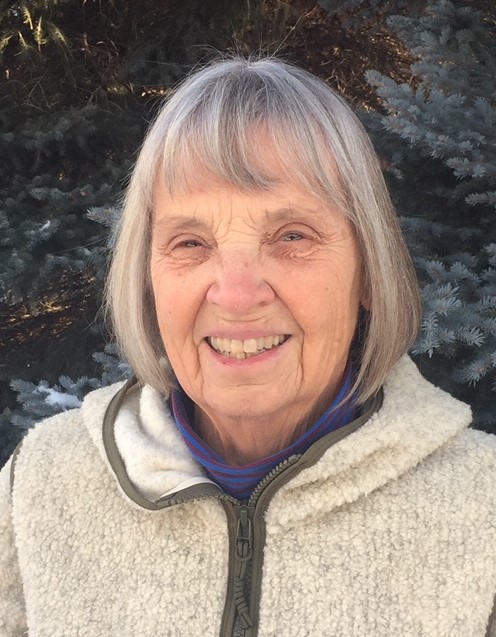 Jan Johnson is a certified health physicist with over 50 years of experience in radiation health physics including radiation worker training, environmental and occupational radiation protection, and radiation risk assessment. She was a member of the faculty at Colorado State University (CSU), initially as a research associate, eventually managing the CSU Environmental Health Services Department. Jan Johnson is a certified health physicist with over 50 years of experience in radiation health physics including radiation worker training, environmental and occupational radiation protection, and radiation risk assessment. She was a member of the faculty at Colorado State University (CSU), initially as a research associate, eventually managing the CSU Environmental Health Services Department.
Since leaving CSU in 1995, she has worked as a consultant in radiation protection, primarily involving the uranium-recovery industry. She was a member of the US Environmental Protection Agency Science Advisory Board Radiation Advisory Committee from 1995 to 2003 and served on the Colorado Radiation Advisory Committee until 2013.
She is a fellow of the HPS and received the Society's Founders Award in 2013.
|
|
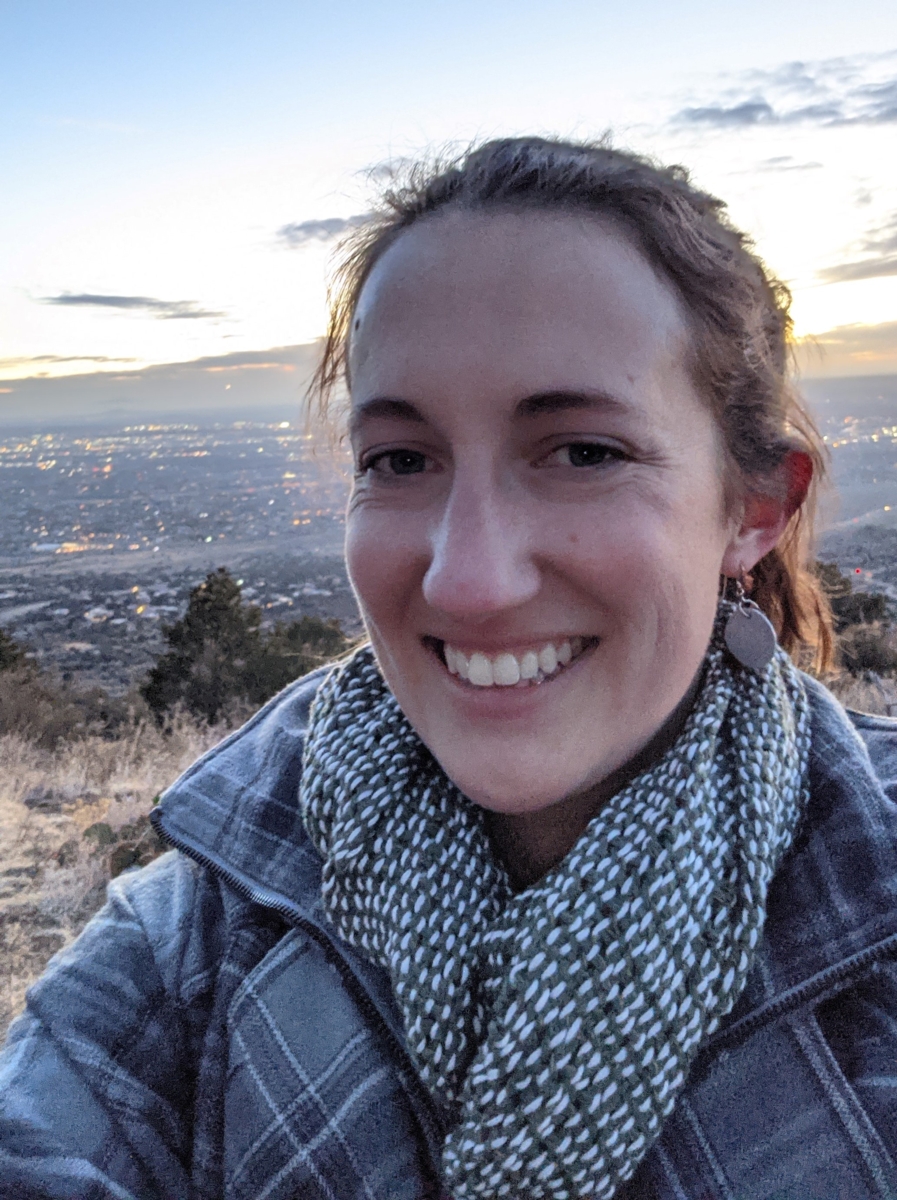 Jess Joyce is a certified health physicist who received her MS in health physics and BS in environmental health at Colorado State University. She began her career at Los Alamos National Laboratory in New Mexico, where she focused on environmental monitoring, radiological dose assessment, and facility decommissioning. Jess Joyce is a certified health physicist who received her MS in health physics and BS in environmental health at Colorado State University. She began her career at Los Alamos National Laboratory in New Mexico, where she focused on environmental monitoring, radiological dose assessment, and facility decommissioning.
Currently, Jess works as a consultant with H3 Environmental. Her work focuses on radioactive materials licensing, management, and decommissioning primarily within the uranium fuel cycle. Her areas of interest include historical site assessment and evaluation of environmental impacts from legacy facilities.
She has been active in the North Central Chapter of the HPS, serving as secretary/treasurer from 2017 to 2019 and president-elect beginning in 2021, and in the national HPS, serving on the Membership Committee since July 2021.
|
Homeland Security and Security Screening
|
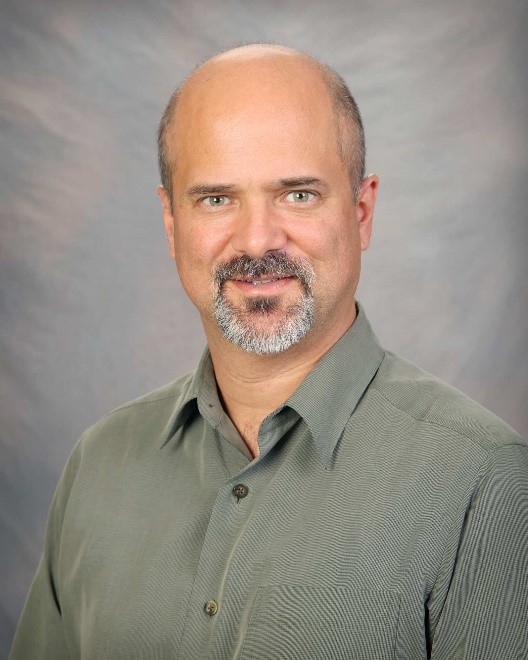 Craig Marianno is an assistant professor in the Department of Nuclear Engineering at Texas A&M University and the deputy director for the Center of Nuclear Security Science and Policy Initiatives. Craig Marianno is an assistant professor in the Department of Nuclear Engineering at Texas A&M University and the deputy director for the Center of Nuclear Security Science and Policy Initiatives.
Prior to coming to Texas A&M, he was a contractor for the National Nuclear Security Administration, where he served on many of its emergency response teams, including the Consequence Management Response Team, Search Response Team, Radiological Assistance Program, and Aerial Measuring System. His research team at Texas A&M focuses on emergency-response health physics, radiation detection, and nuclear security.
|
Industrial Radiation and Radiation Materials Science
|
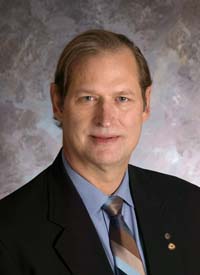 John Hageman is a certified health physicist and was the radiation safety officer and principal scientist from Southwest Research Institute® (SwRI®) until his recent retirement. He has a BS in physics from the University of Texas (UT) at Arlington and an MS in radiological sciences-medical health physics from the UT Health Science Center at San Antonio. John Hageman is a certified health physicist and was the radiation safety officer and principal scientist from Southwest Research Institute® (SwRI®) until his recent retirement. He has a BS in physics from the University of Texas (UT) at Arlington and an MS in radiological sciences-medical health physics from the UT Health Science Center at San Antonio.
At SwRI he was responsible for the use of a large variety of radionuclides under a broad radioactive material license issued for research and development. He was also responsible for the safe operation of a large variety of radiation-producing machines used for laboratory analysis and the High-Level Radiation Effects Facility, which is licensed for sealed sources of 60Co and 137Cs. He holds a patent on a charged-particle powered battery and has consulted in the design analyses for hot cells and accelerator shielding.
He was a manager with the Center for Nuclear Waste Regulatory Analyses at SwRI for several projects for the NRC's high-level radioactive waste program. He also worked with Westinghouse Electric Corporation as a nuclear plant engineer, where he supervised plant operations and the training of Naval officers at the Idaho Naval Reactors Facilities.
For the HPS, he is an associate editor of Operational Radiation Safety (1999–present), was a member of the Board of Directors (2003–2005), became a fellow in 2004, and served as treasurer-elect/treasurer (2009–2012).
|
Instrumentation and Measurements and Radiation Fundamentals
|
.jpg) Deepesh Poudel is a health physicist at Los Alamos National Laboratory, where he is responsible for internal dose assessment for hundreds of workers working with plutonium, americium, uranium, tritium, and other radionuclides. He obtained his MS in physics (health physics) and PhD in nuclear science and engineering (health physics) from Idaho State University. Deepesh Poudel is a health physicist at Los Alamos National Laboratory, where he is responsible for internal dose assessment for hundreds of workers working with plutonium, americium, uranium, tritium, and other radionuclides. He obtained his MS in physics (health physics) and PhD in nuclear science and engineering (health physics) from Idaho State University.
His interests include internal dosimetry and biokinetic modeling, radiation protection and applied health physics, radiation instrumentation and counting statistics, and environmental health physics. He has authored or coauthored more than 30 peer-reviewed papers and several dozen conference abstracts and papers.
He has been certified by the American Board of Health Physics since 2018.
|
|
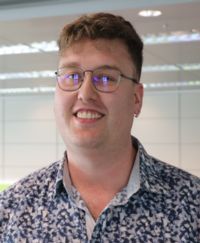
Daniel Hunton is a certified health physicist and a graduate of McGill University in Montreal, Canada, with a degree in chemical engineering and currently works for the Canadian Nuclear Safety Commission. They are also a professional engineer in the province of Ontario and a registered radiation safety professional—CRPA(R)—in Canada.
Daniel has been a health physicist for over 10 years and has supported many operating radiological facilities including research and development laboratories, waste management, fuel fabrication, and others. Daniel previously provided technical oversight and support of Canadian Nuclear Laboratories' bioassay laboratories and acted as their subject-matter expert in internal dosimetry.
|
Lasers, Infrared, and Ultraviolet Radiation
|
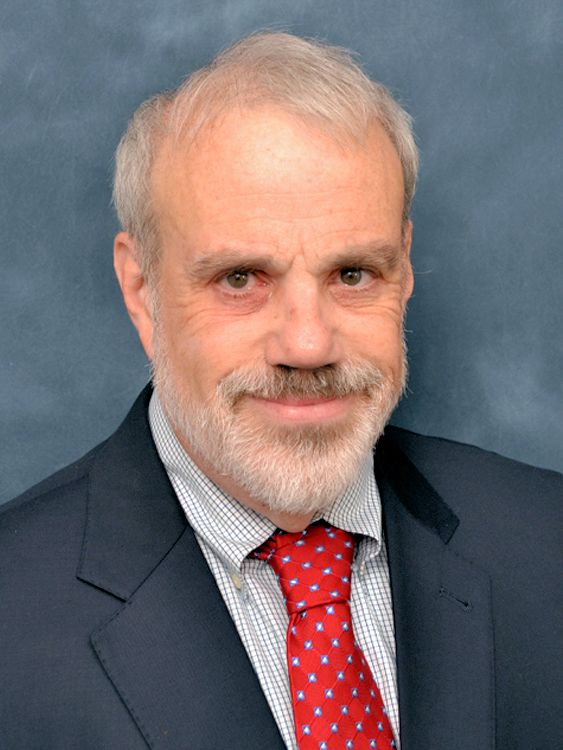 Paul Charp is a governmental health physicist with over 30 years of experience in the fields of environmental health physics, radiation biology, and radiation safety. He has evaluated the public health impacts from hazardous waste sites contaminated with radioactive materials, including sites related to the Manhattan Project as well as uranium mining and milling. Paul Charp is a governmental health physicist with over 30 years of experience in the fields of environmental health physics, radiation biology, and radiation safety. He has evaluated the public health impacts from hazardous waste sites contaminated with radioactive materials, including sites related to the Manhattan Project as well as uranium mining and milling.
Besides working in the public health sector, he is also a part-time instructor in the radiological and nuclear engineering and medical physics programs at Georgia Tech. While in the former Biology Division at Oak Ridge National Laboratory, Paul studied the effects of ultraviolet light on the damage and repair of human cells at the molecular and biochemical levels.
A member of the HPS since 1989, he has served on many committees and is a member of the Homeland Security, Medical Physics, and Environmental/Radon Sections.
|
Medical and Dental Equipment and Shielding
|
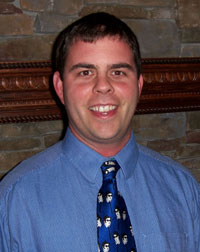 Kennith "Duke" Lovins is a medical health physicist and is certified by the ABHP. He has an MS degree in health physics from the University of Cincinnati and a BHS degree in radiological health science from the University of Kentucky. Kennith "Duke" Lovins is a medical health physicist and is certified by the ABHP. He has an MS degree in health physics from the University of Cincinnati and a BHS degree in radiological health science from the University of Kentucky.
He has been employed by Unicon Physics, Inc., in Cincinnati, Ohio, since 1995 and provides consulting services to hospitals and clinics. His responsibilities include performing nuclear medicine department audits, developing quality-assurance programs for diagnostic radiology departments, performing quality-control testing on x-ray equipment, and providing training and membership on a number of radiation safety committees. Previously, he was a health physicist at the VA Medical Center in Lexington, Kentucky.
Duke is a member of the HPS, the American Association of Physicists in Medicine (AAPM), the Conference of Radiation Control Program Directors, and the Cincinnati Radiation Society. He was a member of the joint HPS/AAPM working group to develop an ANSI standard for fetal radiation dose calculations.
|
Medical and Dental Patient Issues
|
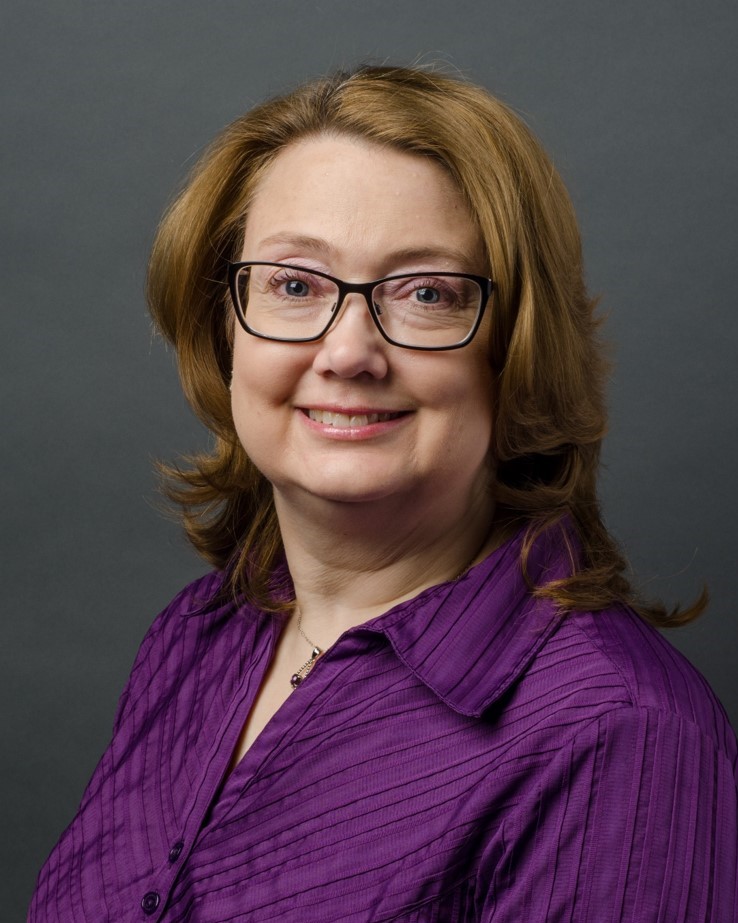 Deirdre Elder is a certified health physicist with an undergraduate degree in engineering physics from Colorado School of Mines and a master's degree in radiological health sciences (health physics) from Colorado State University. She is the radiation safety manager and laser safety officer for University of Colorado Hospital, Longs Peak Hospital, Highlands Ranch Hospital, and other facilities in the UCHealth system. Her responsibilities include providing radiation safety and laser safety training to residents, fellows, and staff. Deirdre is an active member of the HPS and has served on several committees. Deirdre Elder is a certified health physicist with an undergraduate degree in engineering physics from Colorado School of Mines and a master's degree in radiological health sciences (health physics) from Colorado State University. She is the radiation safety manager and laser safety officer for University of Colorado Hospital, Longs Peak Hospital, Highlands Ranch Hospital, and other facilities in the UCHealth system. Her responsibilities include providing radiation safety and laser safety training to residents, fellows, and staff. Deirdre is an active member of the HPS and has served on several committees.
She was the president of the Central Rocky Mountain Chapter and secretary/treasurer of the Medical Section. She is also a certified medical laser safety officer and a member of the Laser Institute of America.
|
Medical and Dental Patient Issues
|
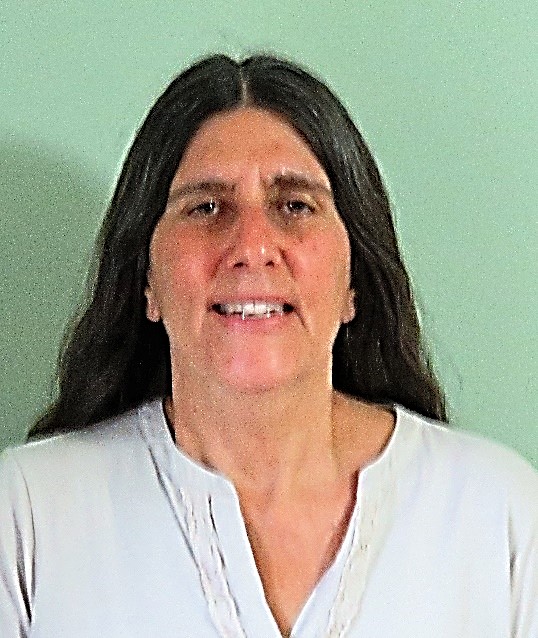 Victoria (Vicki) Morris is a retired medical radiation safety officer. Currently, she is a consultant. A major portion of her consulting assignments involves auditing nuclear medicine and radiation oncology programs. Victoria (Vicki) Morris is a retired medical radiation safety officer. Currently, she is a consultant. A major portion of her consulting assignments involves auditing nuclear medicine and radiation oncology programs.
Vicki has a bachelor of science in environmental health and a master of science in health sciences, both from Purdue University. She is certified by the American Board of Health Physics (ABHP) and is currently a member of the ABHP board. She is a fellow of the HPS and has served on several Society committees, including serving one term as a Board member and one term as president for the Medical Health Physics Section.
Vicki is active with local chapters of the HPS. She served 22 years on the board of the Cincinnati Radiation Society, including one term as president and three terms as secretary. In addition, Vicki served on the state of Ohio Radiation Advisory Board and several Ohio radiation regulation development committees.
|
Nuclear Medicine Patient Issues
|
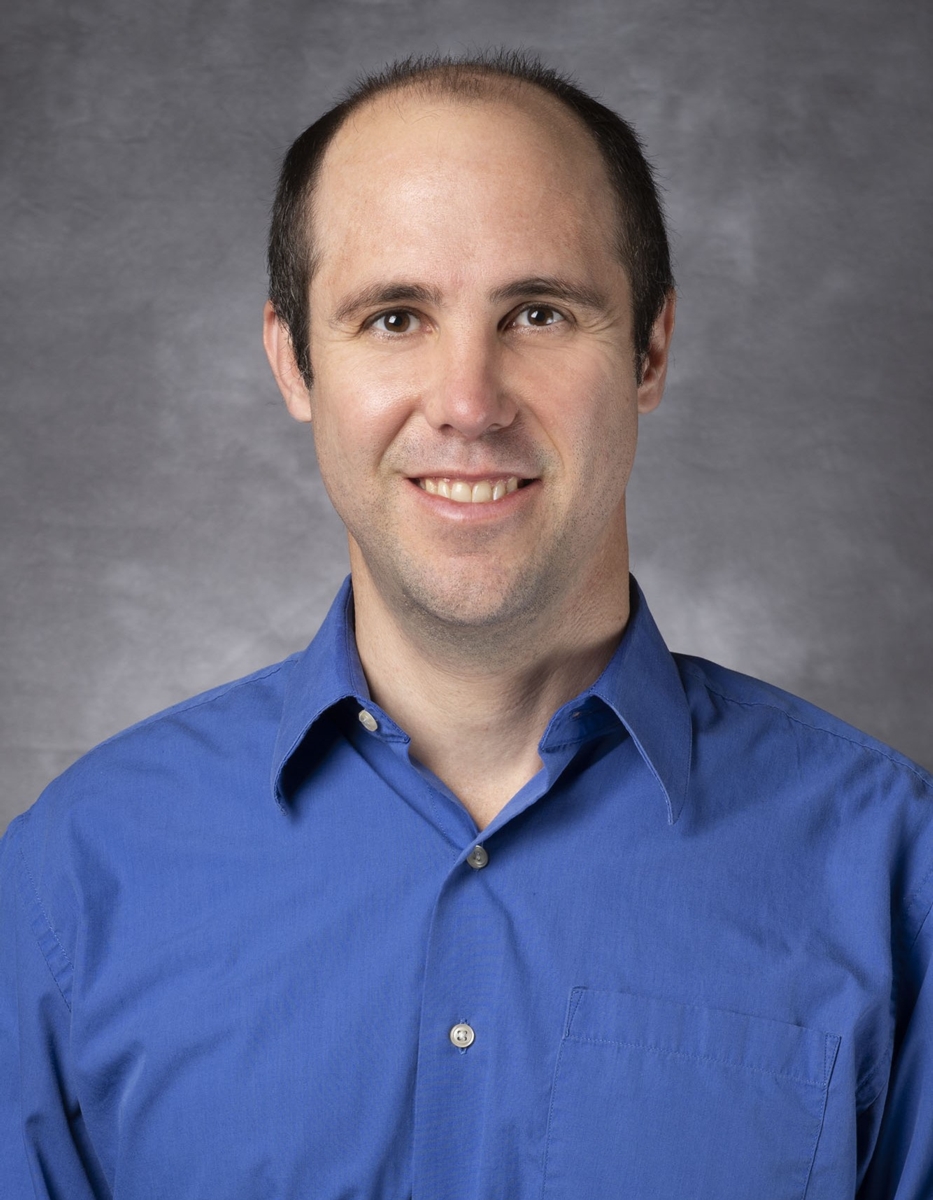 John Metyko, MS, CHP, CSP, CMLSO, has been a radiation safety professional in medical and academic settings for 13 years. He is currently the manager of the radiation safety team at MD Anderson Cancer Center and was previously the radiation safety officer and laser safety officer at Seattle Children's Hospital. Prior to that, John held staff-level health physics positions at Texas Children's Hospital and MD Anderson Cancer Center. He is certified in health physics (CHP), medical laser safety (CMLSO), and general safety (CSP) and is licensed by the Texas Medical Board to practice medical health physics within the state of Texas. He has also served in leadership positions within the national and local HPS chapters and is active on HPS and American Academy of Health Physics committees. John Metyko, MS, CHP, CSP, CMLSO, has been a radiation safety professional in medical and academic settings for 13 years. He is currently the manager of the radiation safety team at MD Anderson Cancer Center and was previously the radiation safety officer and laser safety officer at Seattle Children's Hospital. Prior to that, John held staff-level health physics positions at Texas Children's Hospital and MD Anderson Cancer Center. He is certified in health physics (CHP), medical laser safety (CMLSO), and general safety (CSP) and is licensed by the Texas Medical Board to practice medical health physics within the state of Texas. He has also served in leadership positions within the national and local HPS chapters and is active on HPS and American Academy of Health Physics committees.
John's career began as a student extern in the Environmental Health and Safety (EHS) department at MD Anderson. This became a permanent position, and over five years, he had the opportunity to oversee or participate in every aspect of radiation safety as it relates to health care and biomedical research along with cross-training in other EHS subdisciplines. This position was followed by three years working within the radiology department at Texas Children's Hospital as a medical health physicist before joining the Imaging Services Department at Seattle Children's Hospital and then returning to MD Anderson. The radiation safety programs and staffing models differ greatly between these institutions. This has provided John the opportunity to become a well-rounded medical health physicist and the experience to adapt to new challenges.
Formal academic training included an MS in nuclear engineering and a BS in physics (both with a health physics elective focus) from the University of Texas and Texas Southern University, respectively, along with a BA in liberal arts from the University of St. Thomas. Prior to entering the health physics profession, John was a high school math teacher, and the passion for teaching and mentoring serves to guide his management and training philosophies.
|
Popular Culture and Radiation
|
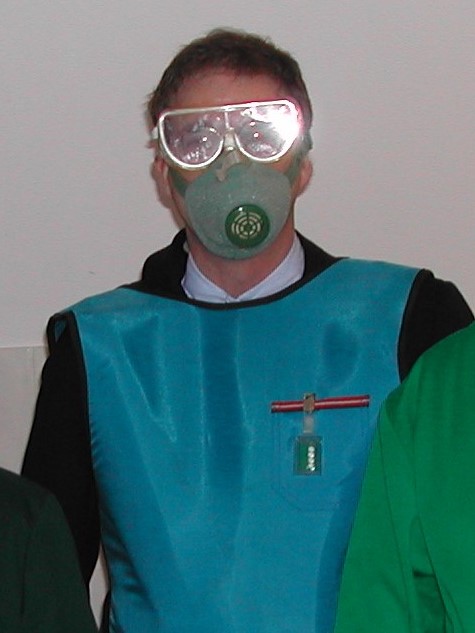 Norman Dickinson brings a wealth of experience to Ask the Experts, including having spent time in the nuclear Navy, in state and local government, and serving as an academic radiation safety officer for several years. His education in geology (BS and MS) has given him a lifelong fascination with naturally occurring radioactive materials (coincidentally also nicknamed NORM), and he has done a great deal of work with isotope geologists and environmental geochemists in a variety of field locations over the years. In addition, as someone who's curious about virtually everything, Norm has picked up quite a bit of oddball information over the years. Norman Dickinson brings a wealth of experience to Ask the Experts, including having spent time in the nuclear Navy, in state and local government, and serving as an academic radiation safety officer for several years. His education in geology (BS and MS) has given him a lifelong fascination with naturally occurring radioactive materials (coincidentally also nicknamed NORM), and he has done a great deal of work with isotope geologists and environmental geochemists in a variety of field locations over the years. In addition, as someone who's curious about virtually everything, Norm has picked up quite a bit of oddball information over the years.
Norm also maintains an interest in the way radiation and nuclear topics are portrayed in the popular media—while he doesn't consider himself to be a masochist, he does find himself drawn to movies, TV shows, and the like in which these play a major role.
Norm lives in the Midwest and considers himself to be "partially retired."
|
Pregnancy and Radiation
|
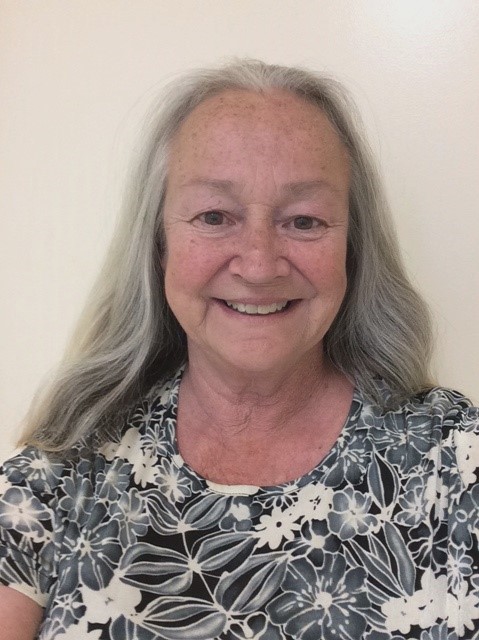 Barbara L. Hamrick received a BS and MS in physics from the University of California (UC) Irvine in 1985 and 1987, respectively. She earned a law degree in 1999 from Loyola Law School in Los Angeles and is an active member of the California State Bar. In 2002, she was certified by the American Board of Health Physics. Barbara L. Hamrick received a BS and MS in physics from the University of California (UC) Irvine in 1985 and 1987, respectively. She earned a law degree in 1999 from Loyola Law School in Los Angeles and is an active member of the California State Bar. In 2002, she was certified by the American Board of Health Physics.
She is currently the radiation safety officer at UC Irvine Health, where she manages the Radiation Safety Program, keeping the environment safe for patients, workers, and the public. Prior to joining the UC Irvine Health team, she spent nearly 20 years as a health physicist in regulatory agencies, including the US Nuclear Regulatory Commission, Los Angeles County Radiation Management, and the California Department of Public Health. Professional activities include serving on the US Environmental Protection Agency's Radiation Advisory Committee, service on three committees of the National Academy of Sciences, and serving as a council member on the National Council on Radiation Protection and Measurements. She is also a past president of the HPS.
|
Regulations, Policies, and Standards
|
 Dan Sowers is a certified health physicist and radiation safety officer for the Defense Threat Reduction Agency where he manages a unique, worldwide radiation protection program. Dan spent 21 years active duty in the Navy as both enlisted and officer. He earned his MS from Purdue University in nuclear engineering and radiological health sciences in 2015. Dan is an active member of the HPS and has served on several committees. Dan Sowers is a certified health physicist and radiation safety officer for the Defense Threat Reduction Agency where he manages a unique, worldwide radiation protection program. Dan spent 21 years active duty in the Navy as both enlisted and officer. He earned his MS from Purdue University in nuclear engineering and radiological health sciences in 2015. Dan is an active member of the HPS and has served on several committees.
|
Webmaster
|
.jpg) Ramesh Bobbu received a bachelor of technology in computer science and engineering at the University of Madras in 1999. His career in software development began in 2002, and he has worked in various roles in that field for close to two decades. He is currently working as a senior developer/team lead. In 2021, Ramesh became the webmaster for the HPS. Ramesh Bobbu received a bachelor of technology in computer science and engineering at the University of Madras in 1999. His career in software development began in 2002, and he has worked in various roles in that field for close to two decades. He is currently working as a senior developer/team lead. In 2021, Ramesh became the webmaster for the HPS.
|
Technical Editor
|
 Craig Little has over 50 years (zowie! that went fast) of experience in radioecology and radiation protection (PhD, Colorado State University). He did his graduate research in the grasslands surrounding the Rocky Flats Plant. During his career, Craig has worked on radiological issues for the US Department of Energy (DOE), the US Nuclear Regulatory Commission, the US Environmental Protection Agency, the US Department of Defense, and the National Institute for Occupational Safety and Health. He established the Oak Ridge National Laboratory office in Grand Junction, Colorado, in support of the DOE Uranium Mill Tailings Remedial Action project and led that office for 18 years. Craig Little has over 50 years (zowie! that went fast) of experience in radioecology and radiation protection (PhD, Colorado State University). He did his graduate research in the grasslands surrounding the Rocky Flats Plant. During his career, Craig has worked on radiological issues for the US Department of Energy (DOE), the US Nuclear Regulatory Commission, the US Environmental Protection Agency, the US Department of Defense, and the National Institute for Occupational Safety and Health. He established the Oak Ridge National Laboratory office in Grand Junction, Colorado, in support of the DOE Uranium Mill Tailings Remedial Action project and led that office for 18 years.
He is currently president and senior scientist for Two Lines Inc. Radiation Risk Consultants. He is focused on occupational and environmental dose modeling, licensing of new uranium-production facilities, training of radiation workers, technical editing, and litigation support for a variety of private clients. He is a member of the Radiation Advisory Committee for the Colorado Department of Public Health and Environment. He currently serves as editor in chief of Operational Radiation Safety and is an associate editor of Health Physics. He also serves as Federal Agency Liaison for the HPS.
|
Editorial Associate
 |
|
|
| Sharon Hebl |
|






_200x259.jpg) Emily A. Caffrey, PhD, CHP, is the program director and an assistant professor for the Master's in Health Physics Program at the University of Alabama at Birmingham. She has a BS in nuclear engineering and a PhD in radiation health physics and statistics from Oregon State University (OSU). Her technical expertise is in ionizing radiation dosimetry and statistics. She obtained the title of certified health physicist (CHP) from the American Board of Health Physics in 2021.
Emily A. Caffrey, PhD, CHP, is the program director and an assistant professor for the Master's in Health Physics Program at the University of Alabama at Birmingham. She has a BS in nuclear engineering and a PhD in radiation health physics and statistics from Oregon State University (OSU). Her technical expertise is in ionizing radiation dosimetry and statistics. She obtained the title of certified health physicist (CHP) from the American Board of Health Physics in 2021. Kamran Vaziri received his PhD in nuclear physics from Utah State University in 1987, doing his doctoral thesis work at Los Alamos National Laboratory. He then worked on nuclear physics experiments at the University of Colorado Nuclear Physics Laboratory and later joined Rensselaer Polytechnic Institute, working on experiments at Brookhaven National Laboratory, Jefferson Lab, and Massachusetts Institute of Technology Bates Linear Accelerator Center. Kamran joined Fermilab's Radiation Physics group in 1992. He has been working on radiation physics problems and reviews of different accelerators and experiments.
Kamran Vaziri received his PhD in nuclear physics from Utah State University in 1987, doing his doctoral thesis work at Los Alamos National Laboratory. He then worked on nuclear physics experiments at the University of Colorado Nuclear Physics Laboratory and later joined Rensselaer Polytechnic Institute, working on experiments at Brookhaven National Laboratory, Jefferson Lab, and Massachusetts Institute of Technology Bates Linear Accelerator Center. Kamran joined Fermilab's Radiation Physics group in 1992. He has been working on radiation physics problems and reviews of different accelerators and experiments.
 Kenneth R. Foster received a PhD degree in physics from Indiana University, Bloomington, in 1971. After serving with the US Navy from 1971 to 1976, he joined the University of Pennsylvania, where he is currently professor emeritus of bioengineering. His technical research has focused on health and safety as related to radiofrequency energy, with approximately 160 papers related to interactions of electromagnetic fields with biological systems ranging from biophysical mechanisms of interaction to heating of tissue by microwave energy.
Kenneth R. Foster received a PhD degree in physics from Indiana University, Bloomington, in 1971. After serving with the US Navy from 1971 to 1976, he joined the University of Pennsylvania, where he is currently professor emeritus of bioengineering. His technical research has focused on health and safety as related to radiofrequency energy, with approximately 160 papers related to interactions of electromagnetic fields with biological systems ranging from biophysical mechanisms of interaction to heating of tissue by microwave energy.
 Charles (Charlie) Wilson is the assistant program director of health physics at the University of Alabama at Birmingham. He has over 15 years of health physics experience and helps lead the newest graduate program in health physics, a burgeoning research program, and is codesigning a new PhD program. He is extremely passionate about finding practical solutions to the radiation safety problems of today and preparing students to answer tomorrow's questions. He received his BS, MS, and PhD from Louisiana State University and is a certified health physicist, certified laser safety officer, and certified safety professional.
Charles (Charlie) Wilson is the assistant program director of health physics at the University of Alabama at Birmingham. He has over 15 years of health physics experience and helps lead the newest graduate program in health physics, a burgeoning research program, and is codesigning a new PhD program. He is extremely passionate about finding practical solutions to the radiation safety problems of today and preparing students to answer tomorrow's questions. He received his BS, MS, and PhD from Louisiana State University and is a certified health physicist, certified laser safety officer, and certified safety professional..jpg) Dustin G. Miller, CHP, RRPT, is the director of Radiological and Nuclear Services at Terranear PMC in St. Louis, Missouri. He received a BS in physics at Eastern Illinois University and is currently the president of the Greater St. Louis Chapter of the HPS.
Dustin G. Miller, CHP, RRPT, is the director of Radiological and Nuclear Services at Terranear PMC in St. Louis, Missouri. He received a BS in physics at Eastern Illinois University and is currently the president of the Greater St. Louis Chapter of the HPS.
 Jan Johnson is a certified health physicist with over 50 years of experience in radiation health physics including radiation worker training, environmental and occupational radiation protection, and radiation risk assessment. She was a member of the faculty at Colorado State University (CSU), initially as a research associate, eventually managing the CSU Environmental Health Services Department.
Jan Johnson is a certified health physicist with over 50 years of experience in radiation health physics including radiation worker training, environmental and occupational radiation protection, and radiation risk assessment. She was a member of the faculty at Colorado State University (CSU), initially as a research associate, eventually managing the CSU Environmental Health Services Department.
 Jess Joyce is a certified health physicist who received her MS in health physics and BS in environmental health at Colorado State University. She began her career at Los Alamos National Laboratory in New Mexico, where she focused on environmental monitoring, radiological dose assessment, and facility decommissioning.
Jess Joyce is a certified health physicist who received her MS in health physics and BS in environmental health at Colorado State University. She began her career at Los Alamos National Laboratory in New Mexico, where she focused on environmental monitoring, radiological dose assessment, and facility decommissioning.
 Craig Marianno is an assistant professor in the Department of Nuclear Engineering at Texas A&M University and the deputy director for the Center of Nuclear Security Science and Policy Initiatives.
Craig Marianno is an assistant professor in the Department of Nuclear Engineering at Texas A&M University and the deputy director for the Center of Nuclear Security Science and Policy Initiatives.
 John Hageman is a certified health physicist and was the radiation safety officer and principal scientist from Southwest Research Institute® (SwRI®) until his recent retirement. He has a BS in physics from the University of Texas (UT) at Arlington and an MS in radiological sciences-medical health physics from the UT Health Science Center at San Antonio.
John Hageman is a certified health physicist and was the radiation safety officer and principal scientist from Southwest Research Institute® (SwRI®) until his recent retirement. He has a BS in physics from the University of Texas (UT) at Arlington and an MS in radiological sciences-medical health physics from the UT Health Science Center at San Antonio.
.jpg) Deepesh Poudel is a health physicist at Los Alamos National Laboratory, where he is responsible for internal dose assessment for hundreds of workers working with plutonium, americium, uranium, tritium, and other radionuclides. He obtained his MS in physics (health physics) and PhD in nuclear science and engineering (health physics) from Idaho State University.
Deepesh Poudel is a health physicist at Los Alamos National Laboratory, where he is responsible for internal dose assessment for hundreds of workers working with plutonium, americium, uranium, tritium, and other radionuclides. He obtained his MS in physics (health physics) and PhD in nuclear science and engineering (health physics) from Idaho State University.

 Paul Charp is a governmental health physicist with over 30 years of experience in the fields of environmental health physics, radiation biology, and radiation safety. He has evaluated the public health impacts from hazardous waste sites contaminated with radioactive materials, including sites related to the Manhattan Project as well as uranium mining and milling.
Paul Charp is a governmental health physicist with over 30 years of experience in the fields of environmental health physics, radiation biology, and radiation safety. He has evaluated the public health impacts from hazardous waste sites contaminated with radioactive materials, including sites related to the Manhattan Project as well as uranium mining and milling.
 Kennith "Duke" Lovins is a medical health physicist and is certified by the ABHP. He has an MS degree in health physics from the University of Cincinnati and a BHS degree in radiological health science from the University of Kentucky.
Kennith "Duke" Lovins is a medical health physicist and is certified by the ABHP. He has an MS degree in health physics from the University of Cincinnati and a BHS degree in radiological health science from the University of Kentucky.
 Deirdre Elder is a certified health physicist with an undergraduate degree in engineering physics from Colorado School of Mines and a master's degree in radiological health sciences (health physics) from Colorado State University. She is the radiation safety manager and laser safety officer for University of Colorado Hospital, Longs Peak Hospital, Highlands Ranch Hospital, and other facilities in the UCHealth system. Her responsibilities include providing radiation safety and laser safety training to residents, fellows, and staff. Deirdre is an active member of the HPS and has served on several committees.
Deirdre Elder is a certified health physicist with an undergraduate degree in engineering physics from Colorado School of Mines and a master's degree in radiological health sciences (health physics) from Colorado State University. She is the radiation safety manager and laser safety officer for University of Colorado Hospital, Longs Peak Hospital, Highlands Ranch Hospital, and other facilities in the UCHealth system. Her responsibilities include providing radiation safety and laser safety training to residents, fellows, and staff. Deirdre is an active member of the HPS and has served on several committees.
 Victoria (Vicki) Morris is a retired medical radiation safety officer. Currently, she is a consultant. A major portion of her consulting assignments involves auditing nuclear medicine and radiation oncology programs.
Victoria (Vicki) Morris is a retired medical radiation safety officer. Currently, she is a consultant. A major portion of her consulting assignments involves auditing nuclear medicine and radiation oncology programs.
 John Metyko, MS, CHP, CSP, CMLSO, has been a radiation safety professional in medical and academic settings for 13 years. He is currently the manager of the radiation safety team at MD Anderson Cancer Center and was previously the radiation safety officer and laser safety officer at Seattle Children's Hospital. Prior to that, John held staff-level health physics positions at Texas Children's Hospital and MD Anderson Cancer Center. He is certified in health physics (CHP), medical laser safety (CMLSO), and general safety (CSP) and is licensed by the Texas Medical Board to practice medical health physics within the state of Texas. He has also served in leadership positions within the national and local HPS chapters and is active on HPS and American Academy of Health Physics committees.
John Metyko, MS, CHP, CSP, CMLSO, has been a radiation safety professional in medical and academic settings for 13 years. He is currently the manager of the radiation safety team at MD Anderson Cancer Center and was previously the radiation safety officer and laser safety officer at Seattle Children's Hospital. Prior to that, John held staff-level health physics positions at Texas Children's Hospital and MD Anderson Cancer Center. He is certified in health physics (CHP), medical laser safety (CMLSO), and general safety (CSP) and is licensed by the Texas Medical Board to practice medical health physics within the state of Texas. He has also served in leadership positions within the national and local HPS chapters and is active on HPS and American Academy of Health Physics committees.
 Norman Dickinson brings a wealth of experience to Ask the Experts, including having spent time in the nuclear Navy, in state and local government, and serving as an academic radiation safety officer for several years. His education in geology (BS and MS) has given him a lifelong fascination with naturally occurring radioactive materials (coincidentally also nicknamed NORM), and he has done a great deal of work with isotope geologists and environmental geochemists in a variety of field locations over the years. In addition, as someone who's curious about virtually everything, Norm has picked up quite a bit of oddball information over the years.
Norman Dickinson brings a wealth of experience to Ask the Experts, including having spent time in the nuclear Navy, in state and local government, and serving as an academic radiation safety officer for several years. His education in geology (BS and MS) has given him a lifelong fascination with naturally occurring radioactive materials (coincidentally also nicknamed NORM), and he has done a great deal of work with isotope geologists and environmental geochemists in a variety of field locations over the years. In addition, as someone who's curious about virtually everything, Norm has picked up quite a bit of oddball information over the years.
 Barbara L. Hamrick received a BS and MS in physics from the University of California (UC) Irvine in 1985 and 1987, respectively. She earned a law degree in 1999 from Loyola Law School in Los Angeles and is an active member of the California State Bar. In 2002, she was certified by the American Board of Health Physics.
Barbara L. Hamrick received a BS and MS in physics from the University of California (UC) Irvine in 1985 and 1987, respectively. She earned a law degree in 1999 from Loyola Law School in Los Angeles and is an active member of the California State Bar. In 2002, she was certified by the American Board of Health Physics.
 Dan Sowers is a certified health physicist and radiation safety officer for the Defense Threat Reduction Agency where he manages a unique, worldwide radiation protection program. Dan spent 21 years active duty in the Navy as both enlisted and officer. He earned his MS from Purdue University in nuclear engineering and radiological health sciences in 2015. Dan is an active member of the HPS and has served on several committees.
Dan Sowers is a certified health physicist and radiation safety officer for the Defense Threat Reduction Agency where he manages a unique, worldwide radiation protection program. Dan spent 21 years active duty in the Navy as both enlisted and officer. He earned his MS from Purdue University in nuclear engineering and radiological health sciences in 2015. Dan is an active member of the HPS and has served on several committees..jpg) Ramesh Bobbu received a bachelor of technology in computer science and engineering at the University of Madras in 1999. His career in software development began in 2002, and he has worked in various roles in that field for close to two decades. He is currently working as a senior developer/team lead. In 2021, Ramesh became the webmaster for the HPS.
Ramesh Bobbu received a bachelor of technology in computer science and engineering at the University of Madras in 1999. His career in software development began in 2002, and he has worked in various roles in that field for close to two decades. He is currently working as a senior developer/team lead. In 2021, Ramesh became the webmaster for the HPS. Craig Little has over 50 years (zowie! that went fast) of experience in radioecology and radiation protection (PhD, Colorado State University). He did his graduate research in the grasslands surrounding the Rocky Flats Plant. During his career, Craig has worked on radiological issues for the US Department of Energy (DOE), the US Nuclear Regulatory Commission, the US Environmental Protection Agency, the US Department of Defense, and the National Institute for Occupational Safety and Health. He established the Oak Ridge National Laboratory office in Grand Junction, Colorado, in support of the DOE Uranium Mill Tailings Remedial Action project and led that office for 18 years.
Craig Little has over 50 years (zowie! that went fast) of experience in radioecology and radiation protection (PhD, Colorado State University). He did his graduate research in the grasslands surrounding the Rocky Flats Plant. During his career, Craig has worked on radiological issues for the US Department of Energy (DOE), the US Nuclear Regulatory Commission, the US Environmental Protection Agency, the US Department of Defense, and the National Institute for Occupational Safety and Health. He established the Oak Ridge National Laboratory office in Grand Junction, Colorado, in support of the DOE Uranium Mill Tailings Remedial Action project and led that office for 18 years.